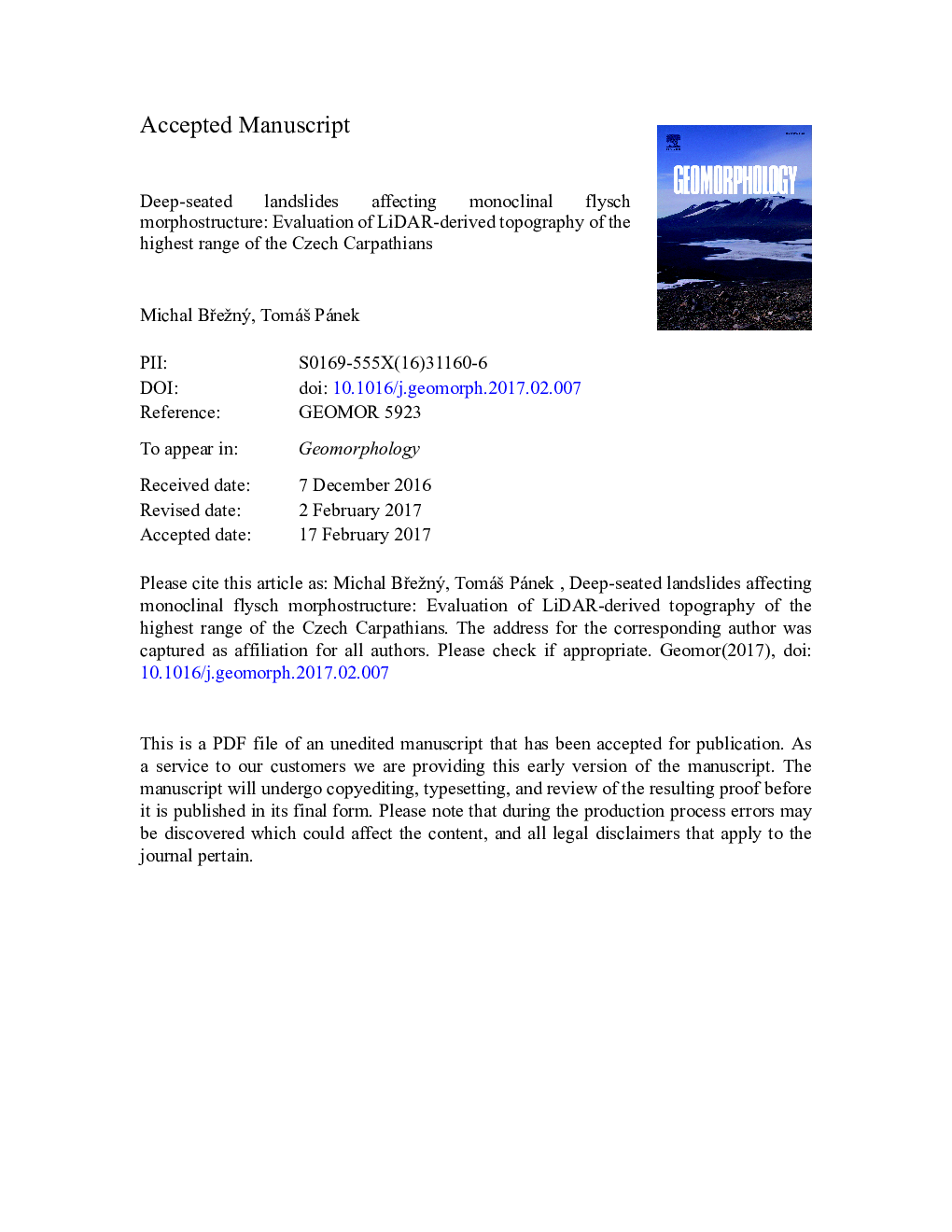| کد مقاله | کد نشریه | سال انتشار | مقاله انگلیسی | نسخه تمام متن |
|---|---|---|---|---|
| 5781030 | 1635364 | 2017 | 56 صفحه PDF | دانلود رایگان |
عنوان انگلیسی مقاله ISI
Deep-seated landslides affecting monoclinal flysch morphostructure: Evaluation of LiDAR-derived topography of the highest range of the Czech Carpathians
دانلود مقاله + سفارش ترجمه
دانلود مقاله ISI انگلیسی
رایگان برای ایرانیان
کلمات کلیدی
موضوعات مرتبط
مهندسی و علوم پایه
علوم زمین و سیارات
فرآیندهای سطح زمین
پیش نمایش صفحه اول مقاله

چکیده انگلیسی
The recent launch of national-scale LiDAR-derived topographic data provides an opportunity for (re)evaluating the geomorphic imprint of landslides in forested mountains. A LiDAR-based inventory of deep-seated landslides (DSLs) in the highest part of Czech Outer Western Carpathians (Moravskoslezské Beskydy Mts.) reveals that nearly 20% of the territory is affected by ancient DSLs. Rather than the topography itself, we show that the geological characteristics of flysch rocks control the density, scaling relationships and morphometry of DSLs. They reveal a strong tendency to clustering in areas with favourable structural conditions, such as cataclinal slopes of individual monoclinal ridges formed by thick-bedded sandstones. In comparison with high-mountain areas and regions dominated by weaker lithology (e.g., claystone-dominated flysch), sandstone-dominated monoclinal structure of the Moravskoslezské Beskydy Mts. features predominantly short-travelled DSLs that are arrested on slopes and thus reveal a higher slope gradient than non-landslide terrain. Finally, we propose a conceptual model for the evolution of DSLs on monoclinal flysch morphostructures, particularly where coherent sandstone caps overlie weak claystone/siltstone-dominated flysch. In these conditions, we distinguish between “low” and “high” monoclinal ridges, where the former is capped by relatively thin sandstones overlying claystone formations and sandstones predominate in the structure of the latter. We show that the density of DSLs on the cataclinal/dip slopes is similar on both types of monoclinal ridges, but that major differences exist in the evolution of anaclinal/escarpment slopes. Here, low monoclinal ridges are highly affected by DSLs, but escarpments of high monoclinal ridges are nearly devoid of any DSLs.
ناشر
Database: Elsevier - ScienceDirect (ساینس دایرکت)
Journal: Geomorphology - Volume 285, 15 May 2017, Pages 44-57
Journal: Geomorphology - Volume 285, 15 May 2017, Pages 44-57
نویسندگان
Michal BÅežný, TomáÅ¡ Pánek,